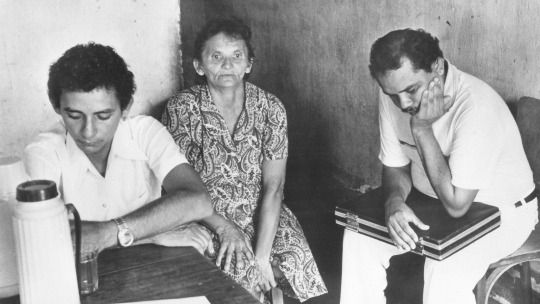#leonardo sampaio
Explore tagged Tumblr posts
Text

There is no doubt that Leo Sampaio will always be one of our favorite gainers! He desperately wants to show everyone his weight gain
2K notes
·
View notes
Text

Explosive Léo 🐳💥
#fat belly#fat gut#leonardo sampaio#weightgain#leosampaio#leo sampaio#belly burp#bloated gut#stuffed feedee
355 notes
·
View notes
Text

Bigger is better, right?🫃
2K notes
·
View notes
Text
Guys we might have another Leonardo Sampaio situation going on here hehe. Go give this gorgeous man a follow and get him to gain weight hehe!
There is amazing content coming 🥵
https://onlyfans.com/?ref=385964716








7K notes
·
View notes
Text
Projeto A Arte Gerando Renda desenvolve oficinas gratuitas para quem tem o sonho de trabalhar na folia de Momo O carnaval já começou, pelo menos para 150 mulheres no Caju, alunas do projeto A Arte Gerando Renda, que tem como objetivo levar suas alunas para um novo nível de sucesso e independência financeira, através de cursos que visam inserí-las no mercado de trabalho. Até dezembro o projeto capacitará mais de 300 alunas para trabalharem no carnaval. Os cursos gratuitos de fantasias e adereços, maquiagem artística, artesanato, maquiagem social, decoração de unhas e tranças e turbantes acontecem este ano no Centro de Referência de Assistência Social (CRAS) XV de Maio, no Caju, mas já passaram por 9 comunidades e desde 2014 já formaram mais de 6.000 pessoas, sendo 98% mulheres. Foram as alunas do projeto as responsáveis por maquiar grandes escolas de samba como Mangueira, Beija-Flor e a campeã Imperatriz Leopoldinense, no carnaval 2023, o que lhes proporcionou experiência e networking. Rosângela Pereira, professora de maquiagem artística foi aluna da primeira turma do projeto e atualmente é um dos grandes nomes da maquiagem artística no carnaval carioca. Liderando uma equipe com 60 profissionais, muitas delas alunas do projeto, ela conquista sonhos e gera empregos para quem, assim como ela, sonha com um futuro melhor. “O impulso para seguir essa nova carreira foi inspirado por minha paixão pela arte da maquiagem. Conheci o curso através de uma amiga e após concluir o curso de maquiagem artística pude construir uma base sólida de habilidades. Hoje lidero uma equipe com mais ou menos 60 maquiadores. Atualmente sou professora do projeto que me formou e os alunos que se destacam passam a fazer parte da equipe”, explicou Rosângela Outra oportunidade de emprego para as alunas do projeto, é a parceria entre o A Arte Gerando Renda e camarotes da Sapucaí, que além das maquiadoras, abre espaço para as profissionais do artesanato e fantasias e adereços, customizando os abadás dos clientes. Outro caso de sucesso é Gisele Lyra, a estudante de História que procurou o curso de fantasias e adereços por indicação médica, e acabou descobrindo uma nova profissão: “trabalhei em um camarote super VIP este ano e atualmente estou contratada de uma grande escola de samba de Niterói. Descobri uma nova paixão e mudei totalmente de vida após fazer o curso do A Arte Gerando Renda. Vivo muito menos estressada e mais feliz trabalhando com arte”, comenta Gisele. O projeto está com inscrições abertas. Para se matricular basta ter mais de 15 anos e ir até o CRAS XV de Maio com xerox da identidade e CPF. Todos os cursos são gratuitos e incluem uniforme e material. O projeto A Arte Gerando Renda tem o patrocínio da Prefeitura Municipal do Rio de Janeiro, Secretaria Municipal de Cultura, Rio Brasil Terminal, AgeRio e Kasznar Leonardos, por meio da Lei Municipal de Incentivo à Cultura - Lei do ISS. Serviço Projeto A Arte Gerando Renda capacita mulheres para trabalhar no carnaval carioca Local: CRAS XV de Maio Endereço: Rua General Sampaio 74, Caju O projeto A ARTE GERANDO RENDA desenvolve atividades que ajudam a alcançar as seguintes metas dos Objetivos do Desenvolvimento Sustentável da ONU: 1, 4, 5, 8, 10, 16.
0 notes
Text

Leo super hungry
3K notes
·
View notes
Text
Caída celeste

Duró poco la alegría y ya al segundo encuentro, en un partido deslucido para el team celeste, con pocas ideas y sin piernas, se perdieron los primeros tres puntos.
ECUADOR 2:1 URUGUAY
Cancha: Estadio Rodrigo Paz Delgado de Quito (Ecuador).
Juez: Wilton Sampaio. Asistentes: Danilo Manis y Rafael Alves (Brasil). Cuarto árbitro: Bruno Arleu (Brasil). VAR: Daniel Nobre. AVAR: Igor Benevenuto (Brasil).
ECUADOR: Hernán Galíndez, Robert Arboleda (69′ Leonardo Realpe), Félix Torres, William Pacho, Ángelo Preciado (83′ José Hurtado), Carlos Gruezo, Moisés Caicedo, Pervis Estupiñán, Kendry Páez (69′ Angel Mena), Johan Julio (69′ Julio Joao Ortiz) y Enner Valencia (90′ Kevin Rodríguez). Director técnico: Félix Sánchez. Suplentes: Alexander Domínguez, Wellington Ramírez, Jhoanner Chávez, Gonzalo Plata, Jordy Alcívar, Joel Ordoñez y José Cifuentes.
URUGUAY: Sergio Rochet, Nahitan Nández, Sebastián Cáceres, Matías Viña, Joaquín Piquerez (59′ Mathías Olivera), Manuel Ugarte, Agustín Canobbio (70′ Facundo Pellistri), Federico Valverde, Nicolás De La Cruz (46′ Felipe Carballo), Maximiliano Araújo (70′ Facundo Torres) y Darwin Núñez (46′ Cristian Olivera). Director técnico: Marcelo Bielsa. Suplentes: Franco Israel, Santiago Mele, Bruno Méndez, Santiago Bueno, José Luis Rodríguez, Brian Rodríguez y Maximiliano Gómez.
GOLES: 38′ Agustín Canobbio (U), 45’+5 Félix Torres (E), 61′ Félix Torres (E).
Tarjetas amarillas: 41′ Nicolás De La Cruz (U), 64′ Mathías Olivera (U), 78′ Ángelo Preciado (E), 90’+2 Matías Viña (U), 90’+6 Carlos Gruezo (E), 90’+7 Facundo Pellistri (U).
Incidencia: a los 50′ Enner Valencia (E), desvió un tiro penal.

1 note
·
View note
Photo
Omg guys it happen
Leo started gaining and he's selling custom stuffing videos and more
Give him a follow here on Tumblr @leoshungry
Or on Insta @_leosampaaio
Let's help him to get really big



In a recent Instagram story I realized how the model Leonardo Sampaio has become a really fat, he can’t hide his chunky and beefy body anymore
#weightgain#chubby#leonardo sampaio#fat#tubby#fat piggy#fat boy#fett#food#gaining weight#gaining fat#fatty belly#gay gainer
376 notes
·
View notes
Photo

How I Letterboxd #13: Erika Amaral.
Film sociologist Erika Amaral on the blossoming of Brazil’s women filmmakers, the joys of queuing for the movies, the on-fire Brazilian Letterboxd community, and the sentimental attachment of her entire nation to A Dog’s Will.
“It is hard to produce art without institutional support and it is very complicated to produce art during this tragic pandemic.” —Erika Amaral
In the wide world outside of English-language Letterboxd, Brazil occupies a particularly fervent corner. Sāo Paulo-based feminist film theorist Erika Amaral has connected with many other local film lovers through her Letterboxd profile, and for anyone with an interest in Cinema Brasileiro, her lists are an excelente place to start.
From her personal introduction to Brazilian film history, to her own attempts to fill gaps in her Latin American cinematic knowledge, Erika’s well-curated selections are a handy primer on the cinema of the fifth-largest country in the world, and its neighbors. These lists sit alongside her finely judged academic deep-dives into filmmakers such as Luis Buñuel, Glauber Rocha and Sarah Bernhardt.
Endlessly fascinated by how “the history of cinema is all intertwined”, Erika has also written on Jia Zhangke for Rosebud Club, is an Ana Carolina stan, enjoys collecting films directed by women featuring mirrors and women, and, like all of us, watched many remarkable movies during quarantine.

Suzana Amaral (left, rear) with cast and crew on the set of her film ‘A Hora da Estrela’ (Hour of the Star, 1985).
Olá, Erika. Please give our readers a brief introduction to your brilliant Introduction to Brazilian Film History list. I’m so happy to see this list getting popular! I’m a sociologist interested in film and gender studies. It’s been four years since I started studying Brazilian film history but my passion for film is much older. I tried to combine those two aspects in this list; films that are meaningful to me, historically relevant films, and historically relevant films erased from film-history books, for instance, those directed by women. The main purpose of my list is to highlight Brazilian women filmmakers’ fundamental contributions to Brazilian cinema.
I listed some absolute classics such as Hour of the Star by the late director Suzana Amaral, and other obscure gems such as The Interview, by Helena Solberg, which is a short feature released in 1966 alongside the development of Cinema Novo. Solberg’s work was hidden for decades. No-one knew about it. In Brazil, especially in the field of film studies and feminist theories, we are experiencing the blossoming of public debates, books being released, and film festivals that look specifically into films such as Solbergs’s and [those of] many other women directors, including Adélia Sampaio, the first Black female director to release a feature film in Brazil in 1984, Amor Maldito. We need these debates on Letterboxd as well, so I wrote this list in English.
As a representative of the passionate Brazilian community on Letterboxd, can you provide some insight into the site’s popularity where you live, especially for those of us who have not learned Brazilian Portuguese? I feel at home using Letterboxd. Everywhere I see Brazilian members posting reviews in both Portuguese and English. It’s a passionate community. It’s directly related to Twitter where Brazilian cinephiles are so active and productive, always sharing film memes (and even Letterboxd memes). Many content creators are using both Letterboxd and Twitter to showcase their podcasts, classes and film clubs. I once started a talk at a university for film students mentioning that my Masters research project came into life when I watched Amélia, showing my mind-blown Letterboxd review in the presentation. I follow many of those students now and it is so good to be connected. Brazilian Film Twitter and [the] Brazilian Letterboxd community are on fire!

Alexandre Rodrigues as Buscapé in ‘City of God’ (2002), directed by Fernando Meirelles and Kátia Lund.
When uninitiated cinephiles think about Brazilian cinema, City of God is most likely top of the list. It’s the only Brazilian film to be nominated for Best Director at the Academy Awards (despite co-director Kátia Lund being shut out!) and it’s the only Brazilian film in IMDb’s Top 250. After nearly 20 years, is it fair for City of God to represent Brazil? Of course, it is fair for City of God to represent Brazil! The only problem is if we think all Brazilian cinema is exclusively City of God. The film is entertaining, well-directed, has a great cast, but it has some flaws—for example, the aestheticization of violence and misery in Brazil, which scholar Ivana Bentes calls the “cosmetics of hunger”. Even so, it is a great film and it captivated Brazilian and international audiences. We shouldn’t limit any country to only one or two films.
If you enjoy City of God, check my list for Brazilian films directed by women in this period, which we call “Cinema da Retomada”—the renaissance of Brazilian cinema after the economic problems [that] hampered the film industry in the 1990s.

Selton Mello and Matheus Nachtergaele in beloved Brazilian comedy ‘O Auto da Compadecida’ (A Dog’s Will, 2000).
Several Brazilian films have stunningly high ratings on Letterboxd, giving them a place on many of our official lists. This includes A Dog’s Will, which is in the top ten of our all-time Top 250. On Letterboxd, A Dog’s Will reviews are cleanly divided into two camps: Brazilians (who absolutely love it) and everyone else (who fail to understand its popularity). What drives this home-team spirit? People truly love A Dog’s Will! It’s funny, has a fantastic rhythm, and it references many aspects of Brazilian culture, especially regarding north-eastern Brazilian culture. It was shown both as a film and as a miniseries infinite times on the largest and most popular television channel in Brazil. I can’t help mentioning that A Dog’s Will portrays Jesus Christ as a black man and Fernanda Montenegro as Brazil’s patron saint, Nossa Senhora Aparecida. It’s a brilliant moment for Matheus Nachtergaele, one of the greatest Brazilian actors ever.
Can you offer us a ‘Gringo’s Guide to A Dog’s Will’? I love the idea of a ‘Gringo’s Guide to A Dog’s Will’! You need to have good subtitles. The beauty of A Dog’s Will is that it is regional but it was made to be understandable to all of Brazil. You are going to need subtitles that [cover] the expressions, slang and proverbs—not mere translations. I would recommend watching some other films from north-eastern Brazil; Land of São Saruê, Love for Sale and Ó Paí Ó: Look at This. This can help you understand other social and cultural dimensions of Brazil beyond, for instance, City of God. A Dog’s Will is a movie that we would watch on a lazy Sunday afternoon with the family, so we have a strong sentimental attachment to it.

Leonardo Villar bears the weight of a cross in ‘The Given Word’ (1964).
Religion plays an important role in Brazilian cinema—for example, one of the few Brazilian films to win the Palme d’Or is the masterful The Given Word. Is this connection a part of what makes Brazilian cinema so potent for the local community? Religious symbolism and religious beliefs are extremely significant in Brazilian cinema. Its presence in cinema seems to address our daily challenges, rituals, history, but not always apologetically—as you can see in the despair of Zé do Burro in The Given Word. Religion does not seem to help him. There’s nowhere to run. The spiritual belief, as well as the cross itself, is a weight on his shoulders.
So you see, religion in Brazilian cinema is so potent because we can think beyond it, we can understand how people relate to their beliefs and how sometimes religion can fail a person. That’s what happens when a priest falls in love with a local girl (The Priest and the Girl), when a curse falls upon a man who turns against his people (The Turning Wind), when we teach fear and sin to young girls (Heart and Guts), when religion becomes a determining way of life that does not pay back efforts (Divine Love), when we accept the possibility of going against religious institutions (José Mojica Marin’s, AKA Coffin Joe, films).
We have all these movies fascinated by religion and how it creates meaning in our society. This is just from Christianity, because if we think of African and Indigenous heritage, we have another whole dimension of films to reflect upon, such as Noirblue and the documentary Ex-Pajé.
We have some Brazilian films in our Official Top 100 by Women Directors list, including The Second Mother, which sits in the top five with City of God. Who are some overlooked female Brazilian filmmakers that you want to celebrate and put on our map? Undoubtedly Juliana Rojas and Gabriela Amaral Almeida. They’re both on the horror scene and their work is astonishing. I strongly recommend Hard Labor and Rojas’ latest film Good Manners (if you are into werewolves). I can’t even pick one for Almeida—The Father’s Shadow and Friendly Beast are awesome. Beatriz Seigner’s The Silences—filmed in the frontier between Brazil, Colombia, and Peru—is really impactful. Glenda Nicácio’s films, co-directed with Ary Rosa, are among my favorite recent Brazilian films. Watch To the End immediately!

Eduardo Coutinho’s ‘Twenty Years Later’ (1984).
Brazilian documentarian Eduardo Coutinho has not one, not two, but three of his films in the Official Top 100 Documentaries list, including the all-time number one Twenty Years Later. Can you describe Coutinho’s significance in Brazil? Coutinho is a monument! Coutinho is an institution! Coutinho is everything. His works are of strong political importance, as you can see in Twenty Years Later. A movie he was making in 1964 was interrupted by the dictatorship installed in Brazil, and the main actor and activist, João Pedro Teixeira, was murdered, then his wife Elizabeth Teixeira had to flee and change her identity.
The documentary follows Coutinho and his crew looking for the actors from his movie from twenty years before. Later, his works developed many different tones and formats as you can see in Playing, an experimental portrayal of real women and their personal experiences side-by-side with actresses representing their real-life events as if in a play. Playing was one of the mandatory films to be analyzed for [my] Film School entrance exam, so I had to watch it a million times in 2017. His works are profound studies on Brazilian people and culture—piercing, but also delicate.
Contemporary documentaries are also doing well; Petra Costa’s latest, The Edge of Democracy, was nominated for an Oscar, and Emicida: AmarElo – It’s All for Yesterday was briefly Letterboxd’s highest-rated film late last year. How are these docs tapping into the zeitgeist? Those are both very different films. Emicida is part of a strong and structured movement against racism, against the marginalization of Black people, against limiting the access to art and culture to certain social groups, which is a common practice in the history of this country. Petra Costa’s documentary is another form of reflection on contemporary politics but in a melancholic tone since, recently in Brazil, we have been facing political storms such as the impeachment of ex-president Dilma Roussef, the imprisonment of ex-president Luiz Inácio Lula da Silva (who has recently been declared not guilty), and rising far-right politicians. Not to mention another of our losses, the still-unsolved killing of Marielle Franco, a Black and lesbian political representative. These films have helped us face these difficulties and try to gather some hope for the future.

Bárbara Colen (center) and villagers in ‘Bacurau’ (2019).
How has Brazil’s cinema industry been affected by the one-two punch of the pandemic on top of ongoing social and political issues? And, can you talk a bit about how the acclaimed Cannes-winner Bacurau shocked the nation two years ago, and in what ways the film confronted these problems? This question is challenging because there’s so much happening. At this moment, we have 428,000 deaths [from] Covid and we are still mourning the Jacarézinho favela massacre in Rio de Janeiro. We have very troubled political representatives that are not fighting Covid in an adequate way to say the least, and we have had major cut downs in the cultural sector since, in Brazil, a lot of artistic and cultural projects are developed with governmental incentives. It is hard to produce art without institutional support and it is very complicated to produce art during this tragic pandemic.
Right before this chaos, we had Bacurau. Actually, I have a pleasant anecdote about my experience with Bacurau. Everybody was talking about how it was going to premiere at a special event with the presence of its directors. We had some expectations regarding the premiere because it was going to be free of charge and it would take place at the heart of São Paulo, the Avenida Paulista, in an immense theater.
We arrived at 1pm to form a line and people were there already. I discovered through Twitter that the first boy in line was hungry so I gave him a banana. I had brought a lot of snacks. The line was part of the event, and it got so long you couldn’t believe it. It was great to see so many friends and people gathered to see a movie—and such an important movie! There weren’t enough seats for everyone but they exhibited the film in two different rooms so more people could enjoy it.
I love everything about that day and I think it helps me to have some perspective on cinema, culture, politics and what we can accomplish by working collectively—people uniting to fight dirty politicians, people joining forces to fight social menaces, generosity, empathy, fight for justice and the power of the masses.

The life of 17th-century nun Sor Juana Inés de la Cruz is explored in María Luisa Bemberg’s ‘Yo, la Peor de Todas’ (I, the Worst of All, 1990).
Would you like to highlight some films from your neighboring countries? I have been watching some fascinating films from South America. Bolivian filmmaker Jorge Sanjinés has an extensive filmography and his films were the first to portray characters speaking Aymara. I really like his Ukamau. I also love Argentine director María Luisa Bemberg’s films, such as I, the Worst of All. I’m currently studying Jayro Bustamante’s La Llorona, from Guatemala. I have no words to say how incendiary this film is. You’ll have to watch it for yourself!
Who are three Brazilian members that you recommend we all follow? Firstly, I recommend you follow my beautiful partner in crime and cinema, Pedro Britto. Secondly, a fantastic painter and avid researcher of Maya Deren and Agnès Varda, my adored friend Tainah Negreiros. Finally, I recommend you follow Gustavo Menezes, who is the author of many excellent lists [about] Brazilian cinema. He’s also the co-founder of a streaming platform called Cinelimite, which everyone should take a look at.
Related content
Silvia’s Cinema Novo list
Gabriela’s Cinema Brasileiro master list
Serge’s list of films that have won the Grande Otelo (Grande Prêmio de Cinema Brasileiro for Best Film)
Follow Erika on Letterboxd, Tumblr and in print
Follow Jack on Letterboxd
#letterboxd#how i letterboxd#erika amaral#film academic#film study#feminist film theory#feminist film#feminist theory#brazilian cinema#cinema o brasilia#Cinema Brasileiro#Brazilian film#suzana amaral
8 notes
·
View notes
Text
Grande oportunidade para quem deseja trabalhar no carnaval ou no mercado da estética. Mais uma vez o projeto A Arte Gerando Renda está oferecendo oportunidades de capacitação profissional gratuita, através de cursos que acontecerão no Caju, Zona Portuária do Rio de Janeiro. As inscrições ocorrerão de 04 de setembro a 9 de outubro. Os cursos são totalmente gratuitos, incluindo uniforme e material. Com foco no mercado de trabalho da estética e do carnaval, as aulas são voltadas para jovens e adultos. Os cursos, com 10 semanas de duração, serão de tranças e turbantes, fantasias e adereços, artesanato, maquiagem social, maquiagem artística e decoração e alongamento de unhas. O projeto tem como objetivo principal transformar a vida de pessoas que moram em comunidades do Rio de Janeiro, oferecendo conhecimento para que possam ingressar no mercado de trabalho e até mesmo atuar de forma autônoma. Para se matricular basta ter mais de 15 anos. O A Arte Gerando Renda já capacitou mais de 6 mil pessoas desde sua primeira edição, em 2014, Cartiane Aparecida Ramirez, de 40 anos, ex-aluna do projeto, hoje colhe os frutos do que aprendeu nas aulas: “comecei fazendo o curso de decoração de unhas e acabo de abrir meu próprio salão de beleza, no Caju. Através do projeto consegui aumentar a minha renda e atualmente contrato outras alunas para trabalharem comigo. Agora estou fazendo o curso de maquiagem para agregar mais ainda no salão”, comenta. O projeto A Arte Gerando Renda tem o patrocínio da Prefeitura Municipal do Rio de Janeiro, Secretaria Municipal de Cultura, Rio Brasil Terminal, AgeRio e Kasznar Leonardos, por meio da Lei Municipal de Incentivo à Cultura - Lei do ISS. 13 ANOS DE SUCESSO DA FAVELA MUNDO A ONG Favela Mundo, que completará 13 anos em setembro, é a única entidade no país a ser reconhecida pela ONU como “Modelo de Inclusão Social nas Grandes Cidades”. O reconhecimento ocorreu no evento World Cities Day, em Nova York. Além deste, a Favela Mundo já representou o Brasil em outros nove eventos no exterior, sendo três deles na Organização das Nações Unidas. SERVIÇO Projeto A ARTE GERANDO RENDA abre 150 vagas em cursos gratuitos de capacitação profissional focados no mercado do carnaval e da estética. As inscrições estarão abertas a partir do dia 04 de setembro. Local: CRAS XV Maio (Rua General Sampaio 74, Caju). Para mais Informações entre em contato pelo whatsapp (21) 2236-4129 ou no site www.favelamundo.org.br
0 notes
Text

No more food for Leo 🥵🐳💥
#fat belly#fat gut#leonardo sampaio#weightgain#leosampaio#leo sampaio#bloated gut#force feed#celulite#belly burp
270 notes
·
View notes



